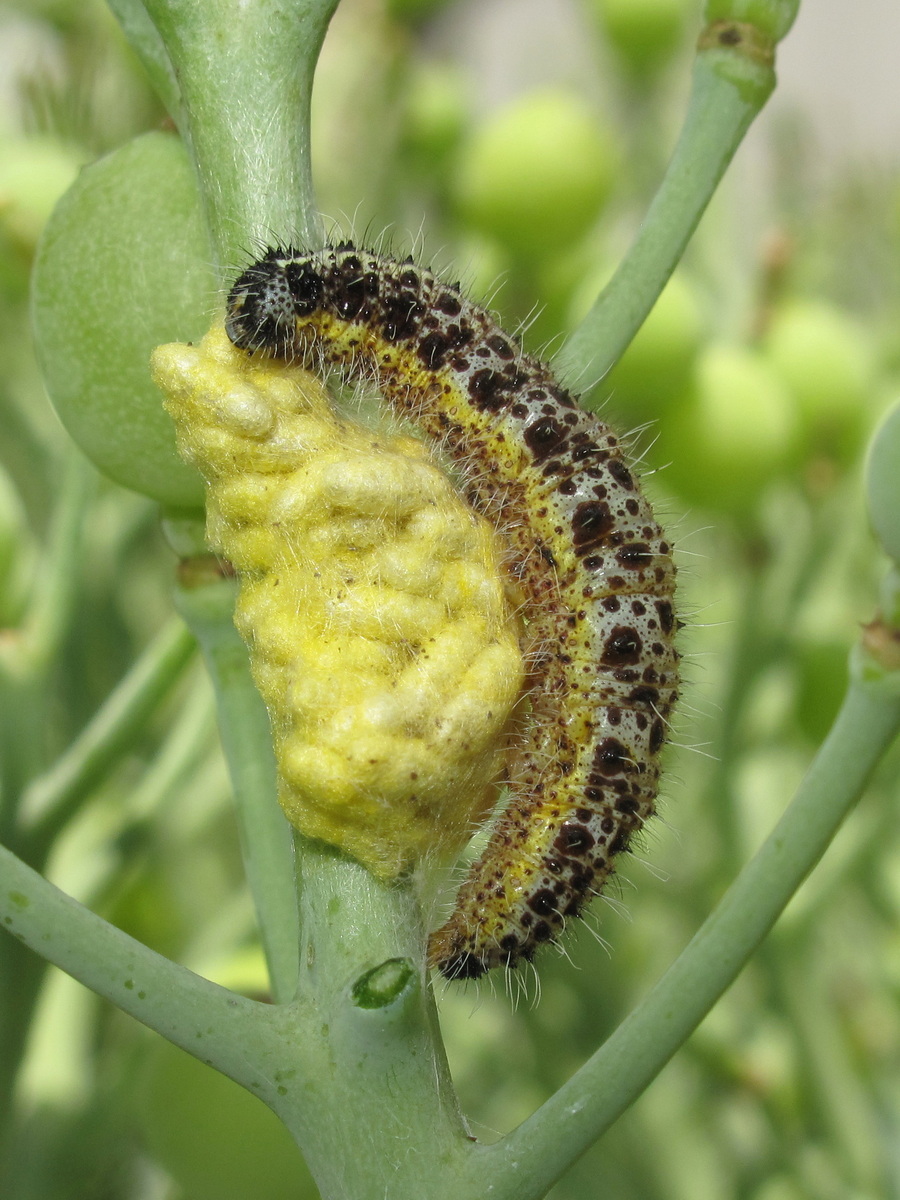The big picture: using wildflower strips for pest control
Farmers and growers are being asked to send large white butterfly caterpillars they come across to assist research into the control of crop pests.
Large whites are sometimes parasitised by a wasp, Cotesia glomeratus, who kill their caterpillar host.
This same species of wasp also appears to parasitise two major crop pests, the African armyworm and fall armyworm, and researcher Ruth Carter hopes to collect wasps from infected UK caterpillars to start a lab colony of parasitised armyworms.
She said: “These armyworms are devastating pests where just a handful of caterpillars can obliterate large areas of cereals or grazing land in a matter of weeks. They’re a real problem right across Africa in particular where they contribute to the continued poverty and misery of millions.
“Our hope is that this tiny parasitic wasp might provide new insights, and possible new ways of controlling armyworm outbreaks, rather than the widespread use of pesticides.”

As part of its life cycle, female wasps lay a clutch of eggs within a caterpillar and over the next two to three weeks these larvae feed on the host before finally killing it.
They then spin their characteristic yellow cocoons (see picture above) on or near the dead caterpillar, before finally emerging as adult wasps.
Ruth, a joint PhD student between Rothamsted and the University of Lancaster, will be investigating the interaction between the wasps, the caterpillars, and the plants they feed on.
“I'm trying to understand how plant ‘smells’ change after the crop has been attacked by the armyworms. We know plants change their leaf chemistry and the chemicals they emit in response to being fed on. I’m trying to understand how this affects parasitoids. For example, are the wasps attracted to these plant aromas – in other words, are the plants calling for help?”
Ruth is asking anybody who comes across large white caterpillars carefully collect them, place them in a pot with leaves of the plant they were on, and then send them to her.
Large white caterpillars are fairly easy to identify and mainly feed on plants within the cabbage family plus other common plants such as nasturtiums.
If you see the characteristic yellow cocoons on or near a dead caterpillar, please send those too.
For more information on how to collect and send caterpillars to Ruth, email Ruth.carter@rothamsted.ac.uk
You can follow her on Twitter @RuthEntomology
Photos: Vince Massimo, UK Butterflies
Rothamsted Research is the longest-running agricultural research institute in the world. We work from gene to field with a proud history of ground-breaking
discoveries in areas as diverse as crop management, statistical interpretation and soil health. Our founders, in 1843, were the pioneers of modern
agriculture, and we are known for our imaginative science and our collaborative approach to developing innovative farm practice.
Through independent research, we make significant contributions to improving agri-food systems in the UK and internationally, with
economic impact estimated to exceed £3 bn in annual contribution to the UK economy. Our strength lies in our systems approach, which combines strategic research,
interdisciplinary teams and multiple partnerships.
Rothamsted is home to three unique National Bioscience Research Infrastructures which are open to researchers from all over the world:
The Long-Term Experiments,
Rothamsted Insect Survey and the
North Wyke Farm Platform.
We are strategically funded by the Biotechnology and Biological Sciences Research Council (BBSRC), with additional support from other national and
international funding streams, and from industry. We are also supported by the Lawes Agricultural Trust (LAT).
The Biotechnology and Biological Sciences Research Council is part of UK Research and Innovation, a non-departmental public body funded by a grant-in-aid
from the UK government.
BBSRC invests to push back the frontiers of biology and deliver a healthy, prosperous and sustainable future. Through our investments, we build and support a vibrant,
dynamic and inclusive community which delivers ground-breaking discoveries and develops bio-based solutions that contribute to tackling global challenges,
such as sustainable food production, climate change, and healthy ageing.
As part of UK Research and Innovation (UKRI), we not only play a pivotal role in fostering connections that enable the UK’s world-class research and innovation system
to flourish – we also have a responsibility to enable the creation of a research culture that is diverse, resilient, and engaged.
BBSRC proudly forges interdisciplinary collaborations where excellent bioscience has a fundamental role. We pioneer approaches that enhance the equality, diversity,
and inclusion of talent by investing in people, infrastructure, technologies, and partnerships on a global scale.
The Lawes Agricultural Trust, established in 1889 by Sir John Bennet Lawes, supports Rothamsted Research’s national and international agricultural science through the provision of land, facilities and funding. LAT, a charitable trust, owns the estates at Harpenden and Broom's Barn, including many of the buildings used by Rothamsted Research. LAT provides an annual research grant to the Director, accommodation for nearly 200 people, and support for fellowships for young scientists from developing countries. LAT also makes capital grants to help modernise facilities at Rothamsted, or invests in new buildings.